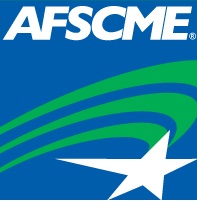Can We Really Call the AFSCME the "Big Dog?"
 A variety of media outlets are reporting that the American Federation of State, County, and Municipal, Employees (AFSCME) is spending $87.5 million on election activities in 2010, making it the “big dog” in spending for the campaign season. The Center for Media and Democracy is a nonpartisan organization, and encourages voters to be skeptical about campaign messages from outside groups regardless of whether they are supporting Democrats or Republicans. However, we feel it necessary to point out that AFSCME’s spending does not equalize the playing field.
A variety of media outlets are reporting that the American Federation of State, County, and Municipal, Employees (AFSCME) is spending $87.5 million on election activities in 2010, making it the “big dog” in spending for the campaign season. The Center for Media and Democracy is a nonpartisan organization, and encourages voters to be skeptical about campaign messages from outside groups regardless of whether they are supporting Democrats or Republicans. However, we feel it necessary to point out that AFSCME’s spending does not equalize the playing field.
First, although AFSCME may be the single biggest spender, the “big dog” title is a little disingenuous, as the corporate-funded interest groups supposedly outspent by the union are numerous and coordinated. Karl Rove’s organization, American Crossroads, is spending $65 million, and it shares office space and harmonizes its activities with American Action Network, which is spending $25 million. Both groups closely coordinate with the Republican Governors Association, which has raised $59 million. The $150 million that these three cohesively-operating groups will likely spend dwarfs AFSCME’s spending. Throw in $25 million from the affiliated Commission on Hope, Growth, and Opportunity, and the total is $175 million. Add the other big-spending right-wing organizations like Club for Growth, the Committee for Truth in Politics, and Americans for Prosperity, and it becomes clear why pro- Republican groups have outspent pro-Democrat groups by 7-to-1.
Secondly, AFSCME dollars are not marked by the secrecy and deception that, in our opinion, taint the other groups. When an ad ends with “brought to you by AFSCME,” viewers know what is motivating the message -- the interests of the union and its employees. The vast majority of labor union funding comes from member dues, which are applied towards advocacy for member interests (and, the Labor-Management Reporting and Disclosure Act requires that the union disclose any donations over $5,000). Voters are able to process the ad’s content based on their perceptions of the union, which can impact the message’s effectiveness: persons who have negative views of labor unions will be more skeptical of the ads.
In contrast, the innocuously-named conservative groups give no indication whatsoever about what is motivating the advertisement. Voters will not have an instinctive reaction, positive or negative, to a group called “American Crossroads.” What’s worse, even if a motivated voter wanted to find out more about the group, they would have a very difficult time discerning the funding sources that can reveal a group’s motivations. Most of the big donations going to these “outside interest groups” are anonymous. For those who do disclose their donors, voters would still have to comb through Federal Elections Commission (FEC) filings, or read news reports on the same.
Americans should always be wary of efforts to influence their democratic duty, and should take efforts to discern who is behind these attempts to sway their vote. To this end, the Center for Media and Democracy has been working to pull back the curtain and give voters more information about these secretive “interest groups.” Read our campaign 2010 reports here.




